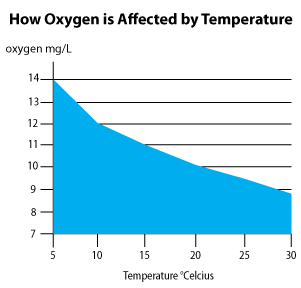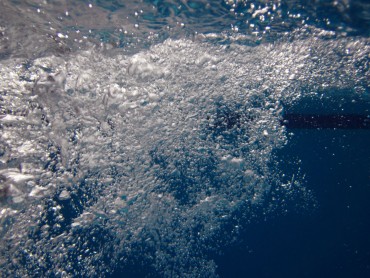The Importance Of Dissolved Oxygen In A Hydroponic Solution
Hydroponic growing requires careful attention to be given to dissolved oxygen availability to the root system.
Dissolved Oxygen is the life force for plants and failure to provide enough oxygenation will lead to crop stress, root disease and in some cases – total crop loss.
NFT Systems
In NFT systems the lower part of the root system is continually sitting in a thin film of nutrient solution. These roots absorb nutrients from the passing flow and trans-locate them into the plant. The only way that these roots can survive is if there is plenty of dissolved oxygen in the passing flow of nutrient solution. If there is not enough dissolved oxygen in the nutrient solution the feeder roots will suffocate and die. This makes it very hard for the plant to stay healthy if the nutrient solution is continually depleted of dissolved oxygen.
A warm nutrient solution will hold much less oxygen than a cooler solution. In warm climates, once the nutrient goes above 27 degrees Celsius it is much harder for it to hold dissolved oxygen. The pump room must therefore be carefully designed to maximise re-oxygenation.
If an NFT grower has a flow rate which is quite a lot higher than 1 litre per minute per gully then this will result in a deeper flow of solution. It moves away from being a “Nutrient Film Technique” and takes on a swifter, deeper flow which is not true NFT. As a result, a higher proportion of roots become submersed and they are exposed to continuous movement from the faster flow, which is something that many plants are not comfortable with or are used to. A deeper flow combined with a warm climate means that a greater proportion of roots become oxygen depleted and suffocate.
NFT Gullies which are too long and have an insufficient slope (less than 1:40) are at risk of ponding and a generate a greater heat loading than shorter gullies.
Dissolved Oxygen availability can be maximised in an NFT pump room by the following methods:
– Install a Venturi Oxygen Injector on the pump bypass. This should be installed 200mm below the water level. The venturi oxygenates as well as lifts any plant waste gases to the surface.
– Ensure there is a good fall from the tip of the return pipe onto the surface of the tank. This is the main way the nutrient solution is reoxygenated.
– The nutrient solution should cascade from the return pipe onto the top of the tank and it must fall through clean air.
– Sprinklers can be installed on the bypass of the pump or on a specialised pump so that fine jets of water spray onto the top of the tank water surface.
– Air blowers or air compressors with air stones can be used to oxygenate the lower regions of the tank and lift the waste as to the surface.
– Wherever possible the use of white floor coverings, white pipework and white NFT gullies helps to reflect the heat causing infra red rays out of the greenhouse. This keeps the nutrient solution and growing media cooler so it retains a higher level of oxygen.
– A Nutrient Solution Chiller will maintain a cooler average temperature of the nutrient solution and enable to hold more dissolved oxygen even in the hottest of climates (this is only a viable option if the grower can recover the additional capital and energy costs through the sale of their crop).
Batch Dosing Drip Fertigation Systems
Drip Fertigation Systems are intermittently fed and plants a grown in a large media buffer.
Oxygen depletion can still be a problem for plants in a Drip Fertigation system if the system is not properly designed.
Dissolved Oxygen availability can be maximised in a Drip Fertigation System by the following methods:
– An Air blower or an air compressor with air stones can be used to oxygenate the lower regions of the batching tank. This also ensures the nutrient solution is well mixed before being fed to the crop. A batching tank tends to sit stagnant between irrigations so the solution needs to be well oxygenated and mixed between irrigation cycles. When the crop is fed via drippers each drop will then contain plenty of dissolved oxygen which will be well received by the root system of the plants.
– A Cycle Timer controller can pulse an air compressor or air blower on and off so it is well oxygenated and mixed throughout the day
– The grower needs to select their growing media carefully. If their growing media does not have a good balance of water holding capacity and free draining capacity then it will become too waterlogged. This will starve the roots of oxygen no matter how well oxygenated the nutrient solution is. In nature the earthworm and varying aggregate sizes within the soil profile creates air passages for assisting oxygenation of the root system. In hydroponics a well-balanced media achieves the same effect.
– Wherever possible the use of white floor coverings, pipework and growbags helps to reflect the heat causing infra red rays out of the greenhouse. This keeps the nutrient solution and growing media cooler so it retains a higher level of dissolved oxygen.
Please talk to Pure Hydroponics for further information on any of the aspects listed above.



